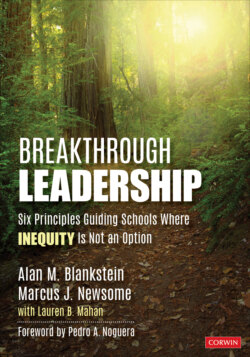Читать книгу Breakthrough Leadership - Alan M. Blankstein - Страница 14
На сайте Литреса книга снята с продажи.
Lessons of Willful Blindness and Its Deadly Outcome in the Pandemic of 1918
ОглавлениеThe COVID-19 pandemic provides a perfect example of why we need a real leader in place during bad times even more than in good times. (Dan Domenech, personal communication, April 6, 2020)
The horrific scale of the 1918 influenza pandemic—known as the “Spanish flu”—is hard to fathom. The virus infected 500 million people worldwide and killed an estimated 20 million to 50 million victims—that’s more than all of the soldiers and civilians killed during World War I combined. (Roos, 2020)
One example of a pandemic that shook the world is the Spanish flu that first emerged in February 1918. This had all of the characteristics of a seasonal flu, although it was highly contagious and extremely harmful. The virus spread rapidly throughout the United States Army installation, after one of the first cases was confirmed for an Army cook. As the month came to a close, 1,100 troops had unfortunately been hospitalized, causing 38 people to perish after developing pneumonia (Roos, 2020).
While virulent, this flu, like its 1957 “Asian” flu successor, might have been brought under control a great deal more quickly had the nation’s leaders been focused on that. Instead of protecting citizens, and particularly the armed forces, United States troops were deployed to France, England, Italy, and Spain, where the virus spread freely. Within months, three-quarters of the French troops were infected as was half of the British Army.
Spain was neutral in this war and actually had fewer incidents of infection. Yet the misnomer of “Spanish flu” arose out of the country’s free and open reporting of the virus’s existence while the American and other media quashed such reports, further exacerbating the pandemic.
Rather than quarantine and treat servicemen, the leadership at the time pursued an aggressive war campaign by moving soldiers throughout the European continent and America, often in close proximity to one another.
In Britain, for example, a government official named Arthur Newsholme knew full well that a strict civilian lockdown was the best way to fight the spread of the highly contagious disease. But he wouldn’t risk crippling the war effort by keeping munitions factory workers and other civilians home. (Roos, 2020)
The dearth of nurses and plans for treatment were also exacerbated by racism. Well-trained Black nurses who were prepared to work were only permitted to assist German prisoners of war.
Ironically, at the end of World War I, President Woodrow Wilson himself was apparently infected during his Paris treaty negotiations (Roos, 2020). The terms of the treaty suffered as a result of his inability to focus and maintain mental acuity, and this set the stage for the next world war.
